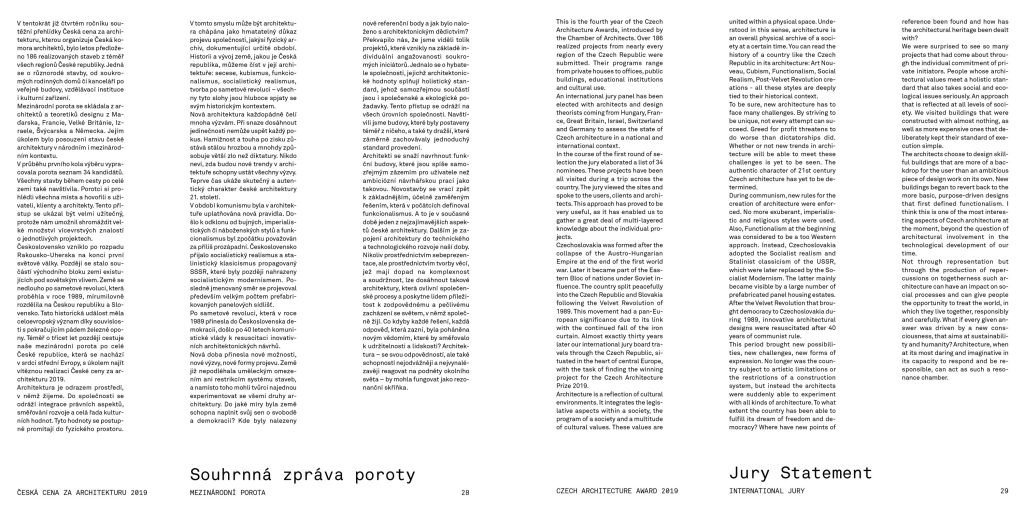Longhouse for the youth, St. Benedikt, Nütschau Monastery
A self-evident place
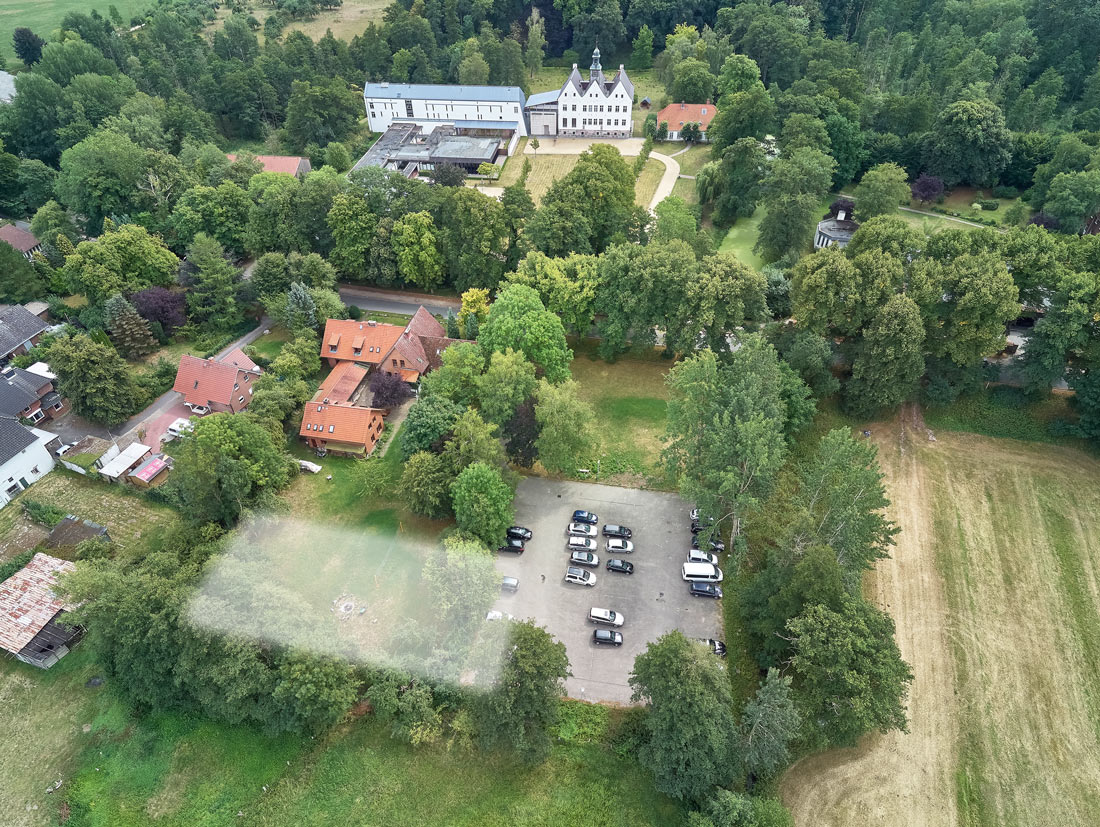
Monastery complex, in the foreground the area for the new youth centre St. Benedikt © Klemens Ortmeyer
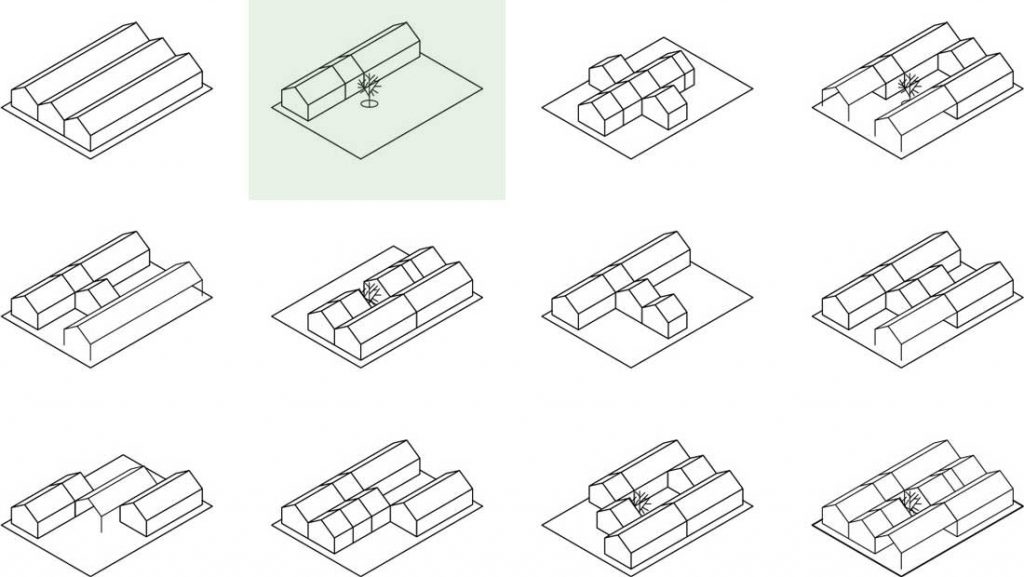
Spatial concept: platform with three longhouses – variants of temporary configuration
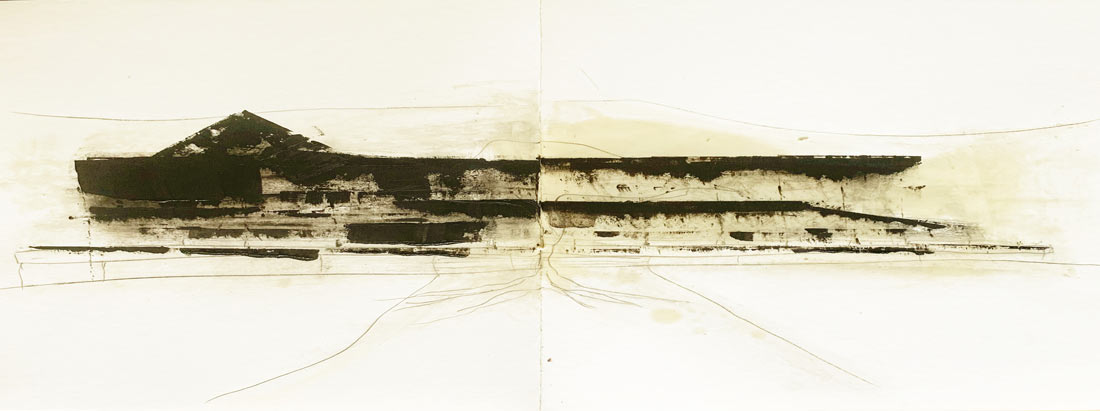
Lying monkshabit, drawing, 2021

Building as a material resource:
1 Solid timber framework: components can be reused.
2 Cross laminated timber ceilings and walls, solid: reuse and wood recycling
3 Photovoltaic roofing, full coverage, for self-sufficient power supply
4 Mastic asphalt floor screed: recycling
5 Engineered wood panels: OSB (construction) and plywood (interior): Reuse and wood recycling
6 Wooden boarding and wooden planks, solid: reuse
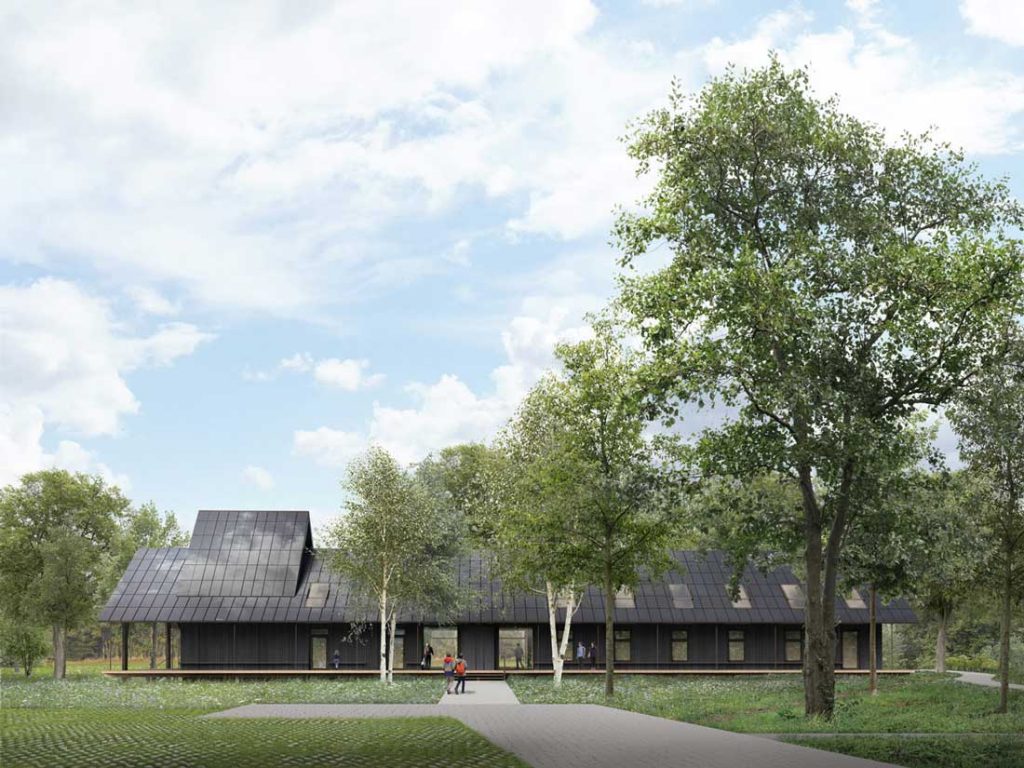
View from south
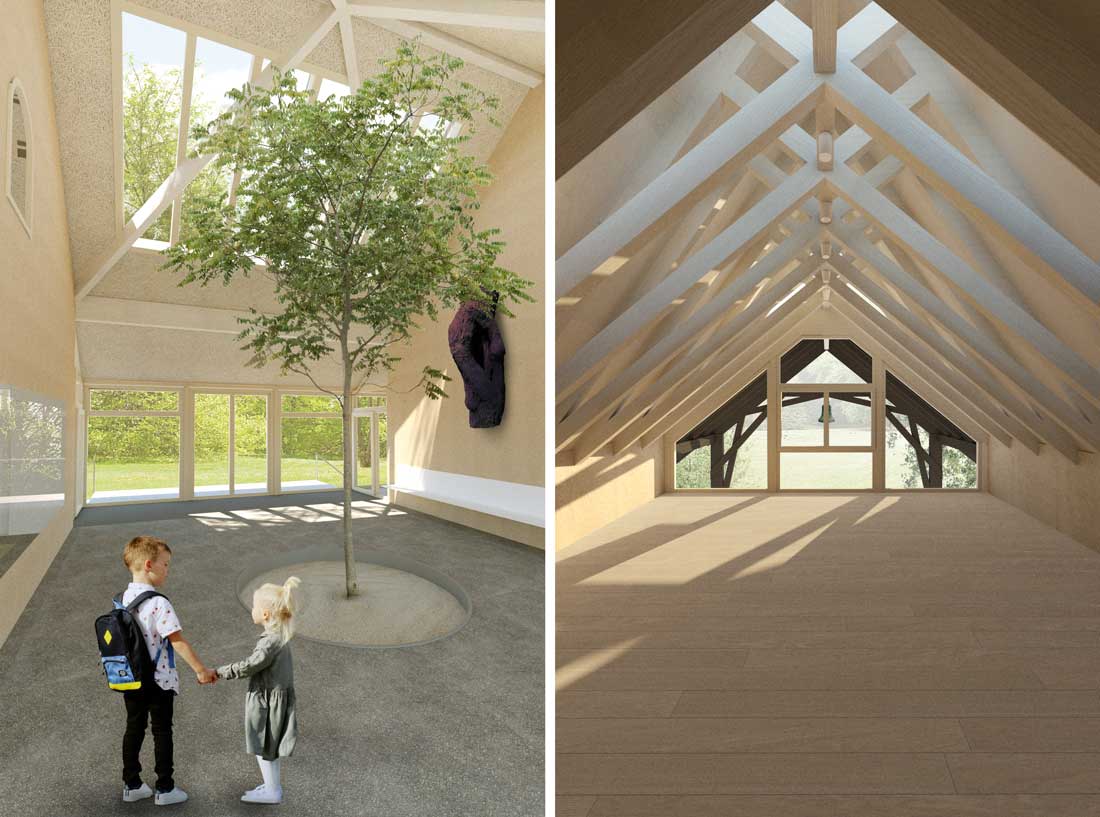
Entrance hall- Meditation room
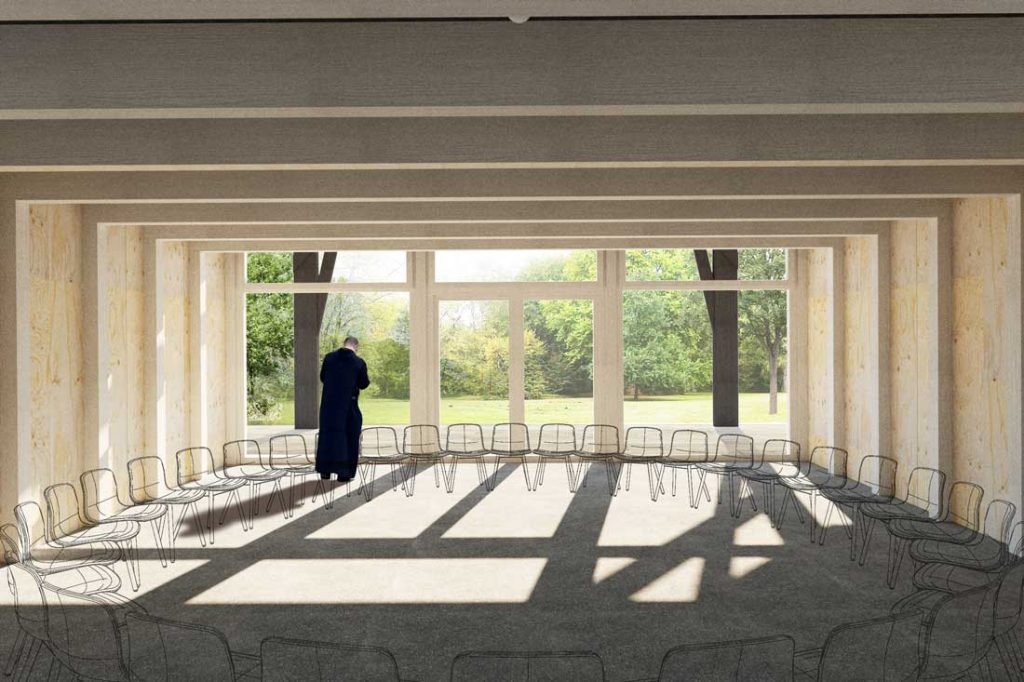
Plenum
Similar-projects:
Cavalier House Meinbrexen
Residential House Berlin-Frohnau
| Programme | A new youth guesthouse with 50 overnight accommodations, common and recreational rooms, offices, kitchen, dining hall, and a housing unit for employees |
| Status | in progress |
| Location | Travenbrück, Germany |
| Client | Benediktinerpriorat St. Ansgar, Kloster Nütschau |
| Area | GFA: 1360 m2, NIA: 930 m2 |
| Construction | Wood skeleton construction |
| Services | Program and location analyses, strategic development, technical concept, design- and approval-planning, visualisation, design planning, approval planning, implementation planning |
| Sustainability | Resource register of all materials (quantity, reusability and recyclability). Self-sufficient heat pump, full-surface photovoltaic roof for power generation, integration of CO2-binding green structures in the outdoor area, minimized development areas. |
| Date | 2020 - 2023 |

